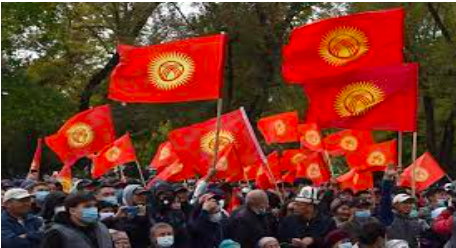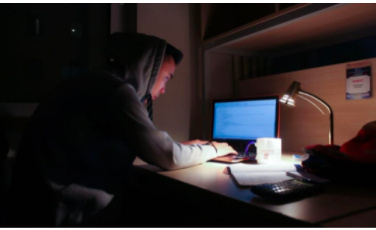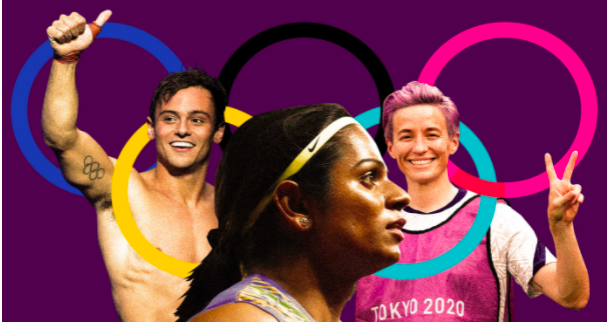Inclusion of LGBTQ Issues in school curriculums: Bringing the reality of sexual identities in classrooms
Posted on : June 7, 2021Author : Suchandra Pal

Some of us might be aware that the PRIDE month has commenced, and since last two days, the social media platforms are almost flooded with vibrant “rainbow-printed” posts bearing the hashtag “#we-support-pride”. In the United States, every year in the month of June, the LGBTQ (Lesbian, Gay, Bisexual, Transgender and Queer) community comes together to celebrate the unity of love, their acceptance and mutual respect for their self and other diverse sexual identities through Pride parades, marches, marathons and concerts. The celebration of Pride is often intended to perpetuate the protests against LGBTQ harassments, to educate about and acknowledge LGBTQ rights and above all to plead for a harmonious society where numerous individuals from this community will be served with equality and dignity. The 1969 Stonewall Riots is the source for celebration of Pride in the United Nations.
Certain Asian countries like Hong-Kong, Japan, South Korea, India, Nepal, Philippines also have conducted Pride celebrations in the past and they are still prevalent. Kolkata (India) city led the first ever South-Asian Pride march with 15 participants in the year 1999 (Calcutta Rainbow Parade).
Historically speaking, these communities have existed throughout ancient civilizations, amongst every culture and period of human history, but it is saddening to witness how such individuals have been maligned and systematically abandoned by the society, in fact, even in the 21st Century. It is often observed that homosexuality is considered by many as ‘unnatural’, and on the other hand, pan-sexuality, asexuality, polysexuality, demisexuality, greysexuality, omnisexuality, ace flux are terms which are widely unknown to most people, although, for certain individuals these are their lived realities. Perhaps, this ignorance to and misinformation about diverge sexual identities is rooted within traditionally shaped ideas of the primordial societal institutions which they have been instilling within individuals throughout generations calling to be “natural” and the indomitable ones, thereby, rejecting the scopes for acceptance of any other thought which counters them. Family, Religious and Educational agencies are some of these societal institutions. This article aims to establish how educational institutions, primarily schools can include issues pertaining to LGBTQ in their curriculum so that it helps in the manifestation of their historical struggle and in uprooting the narrow stigmas that are associated with them.
Schools can be equated as miniature societies, where children coming from different societal, cultural backgrounds meet and form an association, although the amount of representation of children belonging from marginalized and impoverished sections in such schools is another debatable affair. However, it is undeniable that school is a place where an individual primarily establishes himself/herself as a part of a larger community, comprising several other individuals who are unrelated to him/her. From this idea of identifying oneself different to another must be carefully scrutinized and the parameters of drawing out such differences shall be modified especially in terms of gender and sexual orientations. School is an agency, after the family, which inculcates values, preliminary knowledge and ideas within a child’s mind, and hence, it has a major role to play in structuring an individual’s mindset, thereby reconstructing this basic knowledge generation hub can help in the reformation of an individual’s perspectives and insights.
It is to be noted that most of young educands from school these days are very well equipped with the terms ‘gay’, ‘lesbian’, ‘transgender’, essentially because issues concerning these communities are widely propagated or projected through movies, story books, songs or other popular culture mediums. On that account, the stereotypical action of keeping them away from such terms or concepts seems absolutely absurd, whereas proper information must be catered within them so that they do not remain uninformed or misinformed. As Kevin Jennings, a famous American educator, administrator and writer points out that most of the school history books do not include the historical struggles of LGBTQ people and hence, the history that are taught to students are half truths. He suggests that the social studies curriculum must take in such concerns because today’s students are invariably associated with gender issues and terms related to sexualities and sexual identities. He also advocates for inculcation of research oriented skills in classroom teaching, as this type of learning might help the students to develop their critical thinking, analyzing and reasoning capacities, and this might also help them to question rather than just blindly accepting narratives that are being presented to us.
Many a times, it is observed that students often use “gay”, “lesbian” as terms to mock others. In such cases, the approach should be to identify the source from where the particular child learned that such terms can be used as substitutes for abusing or mocking someone and then rectifying them. Sadly, teachers seem to be ignorant regarding such issues and this ignorance gives the child an impression that such actions are not offensive. According to Kevin C. Franck schools must organize monthly or annual gender sensitization workshops for both teachers and students. If possible the parents of the students shall be invited in such workshops. Moreover, teachers must get rid of improper stigmatizations associated with sexual identities and they should stop encouraging any sort of shyness or hesitation while discussing anything analogous to LGBTQ. Inspite of pretending not to notice anti-gay hate slurs used by students they should actively address such issues and counsel the students and make them understand why using such foul words are offensive. This might also provide confidence to students who bear homosexual identities or other sexual identities to come out and believe they are not “different” or “weird” or their choices are not “unnatural”.
There are ample of elementary story books for children whose lead protagonists are LGBT characters; elementary school curriculum can include them as well. More LGBTQ teachers must be recruited to schools so that they can share their lively experiences to students and in a way influence students belonging to such communities.
Students are also found to be interested or curious in exploring about such issues to which they relate and find relevance in their daily lives. In an informal conversation, I asked a student of a school in Kolkata (name of the student and school withheld) about her opinion regarding inclusion of LGBTQ in their school syllabus. Her comments were, “Yes. It should be included because as a student myself I think schools should teach about LGBTQ+ community and why we should treat them equally. There are still a lot of people in my school who think sexuality is something they can bully people about. In civics we should learn about the rights of LGBTQ community. In history we should learn about how it is nothing against our culture and it has been mentioned in several ancient books.”
Suchandra Pal
Intern, Asia in Global Affairs
NOTES AND REFERENCES
- Jennings, Kevin. “‘Out’ in the Classroom: Addressing Lesbian, Gay, Bisexual, and Transgender (LGBT) Issues in the Social Studies Curriculum.” in The Social Studies Curriculum: Purposes, Problems, and Possibilities, edited by E. Wayne Ross. New York: SUNY Press, 2006
- Franck, Kevin C. “Rethinking Homophobia: Interrogating Heteronormativity in an Urban School.” In Theory and Research in Social Education 30, no. 2 (2002): pp 274–86
- Riddle, B. “Breaking the silence: Addressing gay issues in independent schools”, Crossroads School, Santa Monica, CA , 1996
- Lipkin, A. “A staff development manual for anti-homophobia education in the schools.” Harvard Graduate School of Education, Boston, 1992.
- Sanghvi, Moksha. “History of the Pride movement in India.” Deccan Herald, 26 June, 2019. Accessed on 2 August, 2020. https://www.deccanherald.com/specials/history-of-the-pride-movement-in-india-742950.html
- Cover image sourced from- Paul Emerich France, 2019 “ Supporting LGBTQ students in Elementary School”, Edutopia.org, accessed on 28 May 2021, https://www.edutopia.org/article/supporting-lgbtq-students-elementary-school




